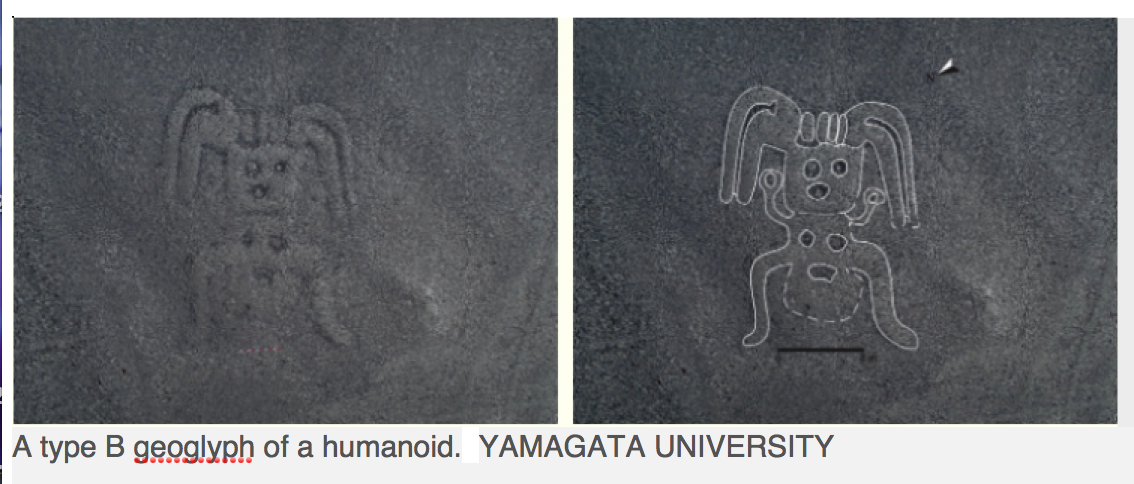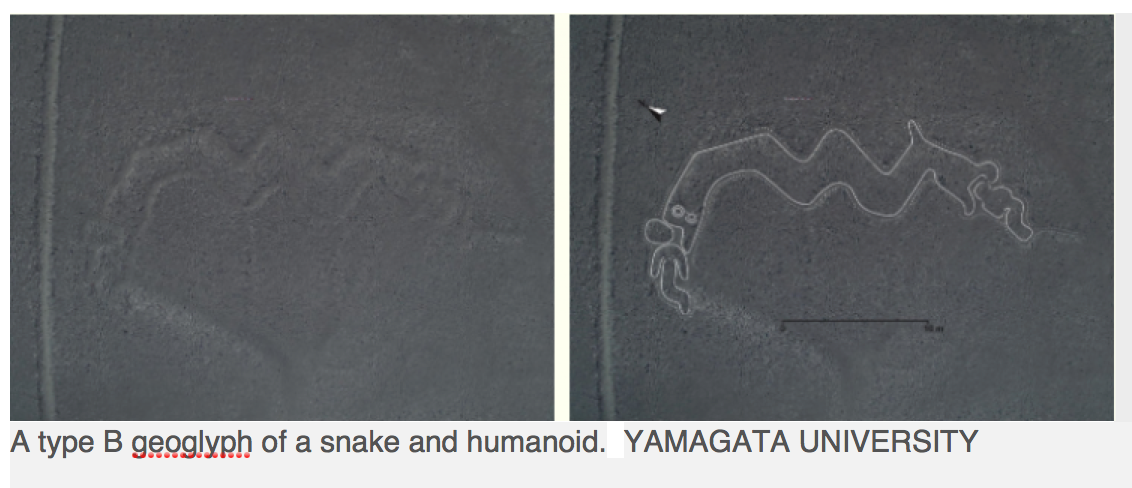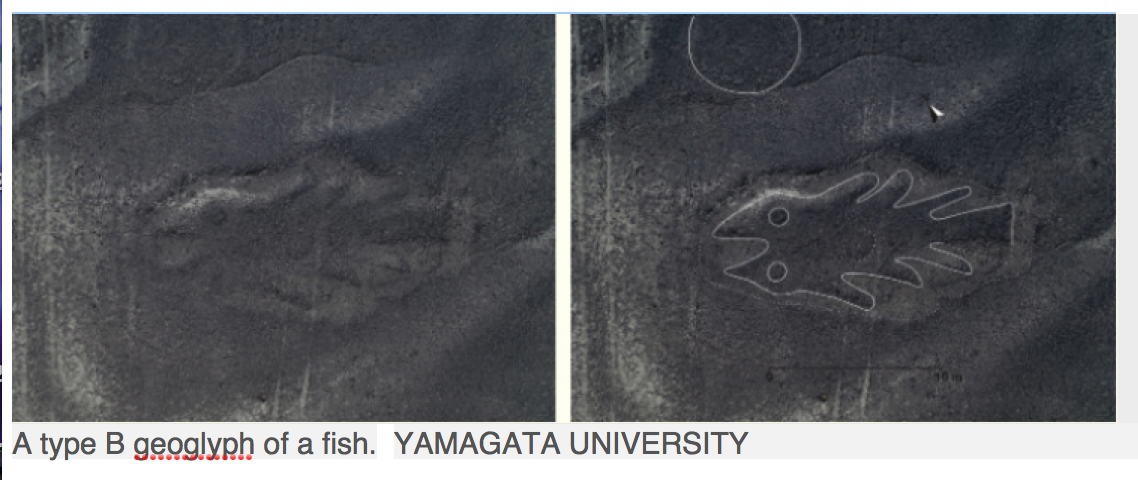
OVER 140 NEW NAZCA LINES—INCLUDING STRANGE HUMANOIDS—DISCOVERED IN PERU
November 18, 2019 - Original article: Newsweek
BY ROSIE MCCALL
Over 100 new geoglyphs depicting fish, snakes and humanoids, among other things, have been identified near Nazca, Peru—thanks, at least in part, to artificial intelligence.
Researchers at Yamagata University and IBM Japan used AI technology belonging to the IBM Thomas J. Watson Research Center in New York to locate 142 geoglyphs, which are thought to date back to a period between 100 BCE and 300 CE. A plethora of living things are represented in this ancient artwork, from fish and birds to monkeys, camelids and humanoids.
They were constructed by removing rocks, leaving a negative image in the white sand below.
The longest piece identified is larger than the Statue of Liberty, measuring more than 100 meters from tip-to-tip, and the smallest is 5 meters—approximately the same size as Michelangelo's David.
Researchers have split the geoglyphs into two categories, based on size, age and design. The first group (type A) are line drawings and tend to be bigger, measuring 50 meters or more. The second group (type B) consists of solid-colored surfaces that are 50 meters and smaller.
The two categories could also be distinguished from one another by age.
Type Bs were older and are thought to have been constructed between 100 BCE and 100 CE in the Initial Nazca Period, or earlier. On the other hand, it is likely type As were built between 100 and 300 CE.
The team hypothesizes these two types served different purposes, the larger type As for rituals involving pottery and type B for decoration. The latter were found near paths or on slopes, suggesting they may have been wayposts to assist travelers.

A type A geoglyph of a bird. YAMAGATA UNIVERSITY

A type B geoglyph of a snake and humanoid. YAMAGATA UNIVERSITY

A type B geoglyph of a fish. YAMAGATA UNIVERSITY
What do we know about the Nazca Lines?
The lines and geoglyphs of Nazca and Palpa, located 400 or so kilometers south of Lima, near the town of Nazca, was declared a UNESCO World Heritage Site in 1994.
The archaeological sites span 517 square kilometers of Peruvian desert and include hundreds of geoglyphs, created by the Nazca civilization between 500 BCE and 500 CE. The region's arid climate means they have existed largely undisturbed for thousands for centuries and were only discovered with the advent of flight, according to National Geographic.
While the function and construction of these artworks remains something of a mystery, the zoomorphic figures and geometric patterns transformed "the vast land into a highly symbolic, ritual and social-cultural landscape that remains until today," the World Heritage Convention states.
"They represent a remarkable manifestation of a common religion and social homogeneity that lasted a considerable period of time."
Theories as to their purpose range from being a big astronomical calendar to being a place to perform rituals for water and farming success. One of the more out there arguments claims the lines could be alien landing sites.